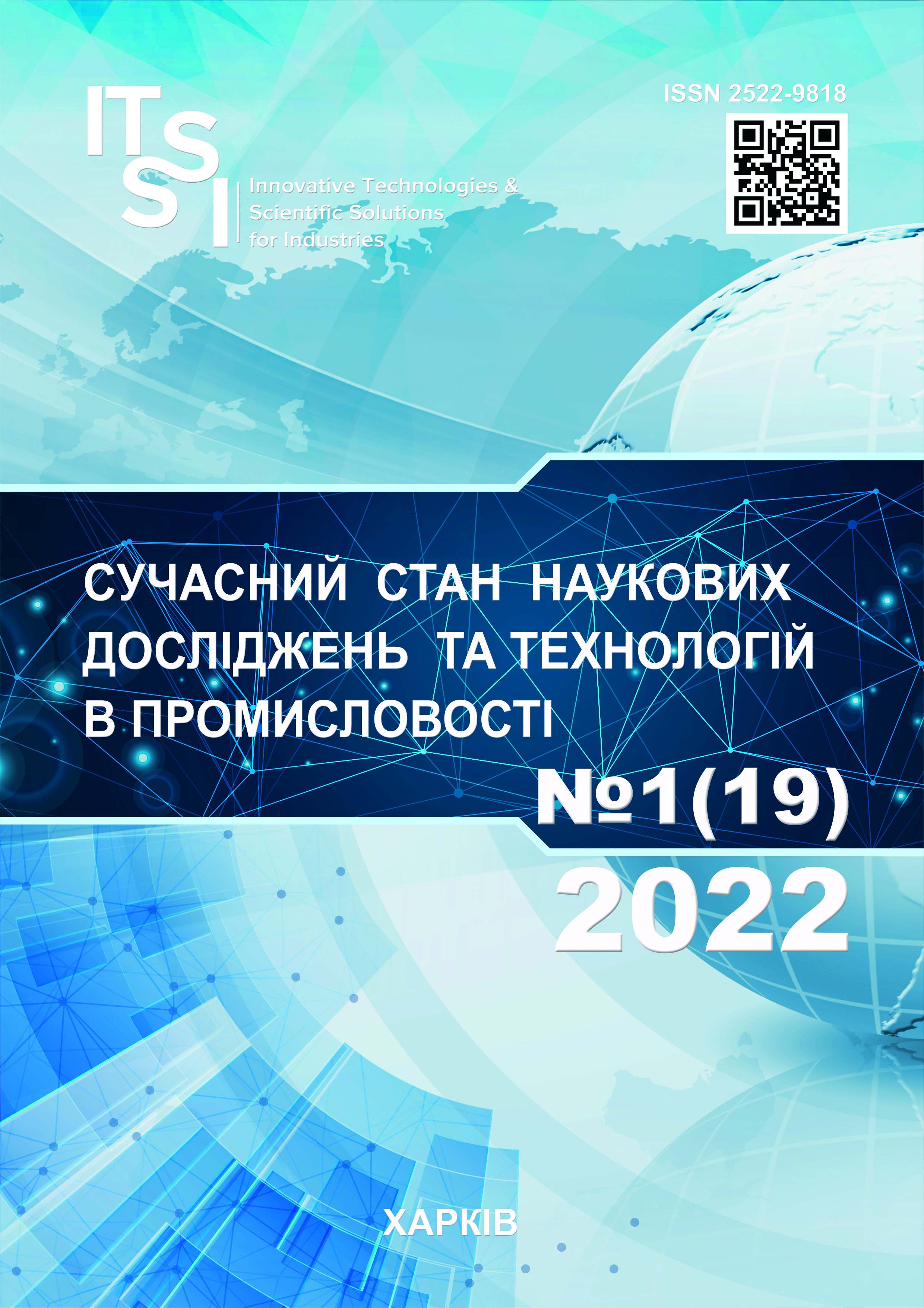COMPUTER SIMULATIONS OF CONTROLLABILITY PROCESSES FOR ROBOTIC WHEELED PLATFORMS TAKING INTO ACCOUNT RESTRICTIONS OF JERK MOTIONS
DOI:
https://doi.org/10.30837/ITSSI.2022.19.065Keywords:
Robotics;, Wheeled Platforms;, Jerk;, Controllability;, Mathematical Model;, Computer SimulationsAbstract
The computer simulations are considered as the required tool to design the suitable autonomous control systems optimal in different senses and especially in providing the restrictions of the jerk motions for the robotic wheeled platforms. The subject matter of this research is the development of the theory and methods for computer simulations of the controllability processes of the robotic wheeled platforms. The goal of this research is to consider the jerks of the wheeled platforms, and the jerks are reduced to the limitation of the acceleration time derivative of the mass center of the wheeled platform, so that this derivative is considered as the quantitative estimation of the jerks. The incorrectness in the Hadamard's sense for direct defining the jerks by differentiations of the phase coordinates in the case of computer simulations using the numerical methods is discussed. Tasks of this research are in developing the generalized approaches for mathematical modelling and computer simulations and in theoretical receiving of the properties inherent for the wheeled platforms and suitable for verification the computer simulations results, as well as in making the calculations to have the quantitative results about the controllability processes for the particular case of the electromechanical four-wheeled platform under the straight motion with the mode of speeding-up from the state of the rest. Methods of this research are based on the Lagrange's equations of second kind, as well as on the electromechanical analogies, and on final representing the mathematical models in the form of the system of the first ordered ordinary differential equations with the initial conditions for further numerical solving. The computer simulations are accomplished by using the Scilab free open source software. Results of this research are in the proposed suitable way for computing the jerks by the phase coordinates without its differentiations allow excluding the incorrectness in the Hadamard's sense, as well as in representing the controllability processes for the electromechanical wheeled platform, including the results for the velocities, the accelerations and the jerks which are necessary to illustrate the controllability processes for the robotic wheeled platforms. By comparison with the theoretically established inherent properties of the wheeled platforms it is shown the correctness of the results of the computer simulations. Conclusions about this research are that the developed approaches for computer simulations of the controllability processes for the robotic wheeled platforms allow considering influence of the control on the different characteristics including the velocity, the acceleration, as well as the jerk motions which are required for designing the controls optimal in different senses.
References
Houtman, W., Lopez Martinez, C.A., Wang, S., Ketels, A., Bruyninckx, H.P.J., van de Molengraft, M.J.G. (2021), "Dynamic control of steerable wheeled mobile platforms applied to an eight-wheeled RoboCup Middle Size League soccer robot", Mechatronics, Vol. 80, 102693. DOI: https://doi.org/10.1016/j.mechatronics.2021.102693
Peng, G., Lu, Z., Tan, Z., He, D., Li, X. (2021), "A novel algorithm based on nonlinear optimization for parameters calibration of wheeled robot mobile chasses", Applied Mathematical Modelling, Vol. 95, P. 396–408. DOI: https://doi.org/10.1016/j.apm.2021.02.012
Moreno-Caireta, I., Celaya, E., Ros, L. (2021), "Model Predictive Control for a Mecanum-wheeled Robot Navigating among Obstacles", IFAC-PapersOnLine, Vol. 54 (6), P. 119–125. DOI: https://doi.org/10.1016/j.ifacol.2021.08.533
Sun, Z., Hu, S., He, D., Zhu, W., Xie, H., Zheng, J. (2021), "Trajectory-tracking control of Mecanum-wheeled omnidirectional mobile robots using adaptive integral terminal sliding mode", Computers & Electrical Engineering, Vol. 96 (A), 107500. DOI: https://doi.org/10.1016/j.compeleceng.2021.107500
Mondal, S., Ray, R., Reddy N. S., Nandy, S. (2022), "Intelligent controller for nonholonomic wheeled mobile robot: A fuzzy path following combination", Mathematics and Computers in Simulation, Vol. 193, P. 533–555. DOI: https://doi.org/10.1016/j.matcom.2021.10.028
Jiang, L., Wang, S., Xie, Y., Quan Xie, S., Zheng, S., Meng, J. (2022), "Fractional robust finite time control of four-wheel-steering mobile robots subject to serious time-varying perturbations", Mechanism and Machine Theory, Vol. 169, 104634. DOI: https://doi.org/10.1016/j.mechmachtheory.2021.104634
Feng Li, Z., Tao Li, J., Fan Li, X., Jian Yang, Y., Xiao, J., Wen Xu, B. (2020), "Intelligent Tracking Obstacle Avoidance Wheel Robot Based on Arduino", Procedia Computer Science, Vol. 166, P. 274–278. DOI: https://doi.org/10.1016/j.procs.2020.02.100
Alipour, K., Robat, A.B., Tarvirdizadeh, B. (2019), "Dynamics modeling and sliding mode control of tractor-trailer wheeled mobile robots subject to wheels slip", Mechanism and Machine Theory, Vol. 138, P. 16–37. DOI: https://doi.org/10.1016/j.mechmachtheory.2019.03.038
Bayar, G., Ozturk, S. (2020), "Investigation of The Effects of Contact Forces Acting on Rollers Of a Mecanum Wheeled Robot", Mechatronics, Vol. 72, 102467. DOI: https://doi.org/10.1016/j.mechatronics.2020.102467
Mamalis, A.G., Nevliudov, I., Romashov, Yu. (2021), "An approach for numerical simulating and processing of measured electrical signals from board sensors installed on wheeled electro-mechanical platforms", Journal of Instrumentation, Vol. 16 (10), P10006. DOI: https://doi.org/10.1088/1748-0221/16/10/P10006
Alyokhina, S., Nevliudov, I., Romashov, Y. (2021), "Safe Transportation of Nuclear Fuel Assemblies by Means of Wheeled Robotic Platforms", Nuclear and Radiation Safety, Vol. 3 (91), P. 43–50. DOI: https://doi.org/10.32918/nrs.2021.3(91).05
Downloads
Published
How to Cite
Issue
Section
License

This work is licensed under a Creative Commons Attribution-NonCommercial-ShareAlike 4.0 International License.
Our journal abides by the Creative Commons copyright rights and permissions for open access journals.
Authors who publish with this journal agree to the following terms:
Authors hold the copyright without restrictions and grant the journal right of first publication with the work simultaneously licensed under a Creative Commons Attribution-NonCommercial-ShareAlike 4.0 International License (CC BY-NC-SA 4.0) that allows others to share the work with an acknowledgment of the work's authorship and initial publication in this journal.
Authors are able to enter into separate, additional contractual arrangements for the non-commercial and non-exclusive distribution of the journal's published version of the work (e.g., post it to an institutional repository or publish it in a book), with an acknowledgment of its initial publication in this journal.
Authors are permitted and encouraged to post their published work online (e.g., in institutional repositories or on their website) as it can lead to productive exchanges, as well as earlier and greater citation of published work.














